What is the Impact of Climate Change on Our Future?
Climate change is not just a buzzword; it's a reality that is reshaping our world in profound ways. As we continue to witness the **effects of climate change** on a global scale, it becomes increasingly clear that the implications stretch far beyond just rising temperatures. This article delves into the multifaceted impacts of climate change on our environment, economy, and society, highlighting the urgency of addressing this global challenge for a sustainable future.
So, what exactly is climate change? At its core, climate change refers to significant alterations in global temperatures and weather patterns over time. While climate change can occur naturally, scientific consensus indicates that human activities, particularly the burning of fossil fuels and deforestation, have accelerated this phenomenon dramatically since the late 19th century. This acceleration has led to an unprecedented rise in greenhouse gas emissions, trapping heat in our atmosphere and causing a cascade of environmental issues.
One of the most alarming aspects of climate change is its **environmental consequences**. We are witnessing rising temperatures, melting ice caps, and altered ecosystems that threaten biodiversity. The urgency for action has never been clearer. The delicate balance of our planet's ecosystems is at stake, and if we don't act now, the repercussions could be catastrophic.
Have you ever noticed how storms seem to be getting stronger? That's not just your imagination. The frequency and intensity of extreme weather events, such as hurricanes, droughts, and floods, have surged in recent years. These events can devastate communities, destroy infrastructure, and lead to significant economic losses. For instance, the National Oceanic and Atmospheric Administration (NOAA) reported that the U.S. alone faced over $1 billion in damages from climate-related disasters in 2020. This alarming trend is a wake-up call for all of us.
Climate change also poses a severe threat to biodiversity. As habitats change or disappear, many species struggle to adapt, leading to extinction. For example, polar bears, reliant on sea ice for hunting, face an uncertain future as their habitat melts away. The loss of biodiversity not only impacts wildlife but also disrupts ecosystems that provide essential services, such as pollination and clean water. Preserving these ecosystems is crucial for the health of our planet and future generations.
Another critical issue is ocean acidification, which results from increased CO2 levels in the atmosphere. As oceans absorb more carbon dioxide, the water becomes more acidic, harming marine life, particularly coral reefs and shellfish. This not only threatens marine biodiversity but also has significant implications for global food security and economic stability, as many communities rely on fishing as a primary source of income.
The implications of climate change extend to human health as well. Increased temperatures can lead to heat-related illnesses, while poorer air quality exacerbates respiratory issues. Moreover, as the climate changes, we are witnessing the spread of infectious diseases into new regions, posing a significant public health threat. This underscores the need for proactive public health interventions to mitigate these risks and protect vulnerable populations.
Climate change isn't just an environmental issue; it also carries significant economic consequences. The costs associated with natural disasters, such as rebuilding infrastructure and providing disaster relief, can strain local and national economies. Additionally, agriculture, a cornerstone of many economies, is feeling the heat—literally. Changes in weather patterns can drastically affect crop yields, leading to food insecurity and threatening the livelihoods of farmers.
As we explore the impact on agriculture, it's essential to recognize that climate change can reduce agricultural productivity. Farmers are facing unpredictable weather patterns, which can lead to crop failures and increased prices for consumers. Sustainable practices and innovative agricultural techniques are more crucial than ever to adapt to these changes and ensure food security for future generations.
Moreover, climate change is driving up insurance costs and exposing infrastructure vulnerabilities. As extreme weather events become more common, insurance companies are forced to reassess risk, leading to higher premiums. Communities must invest in resilient systems to protect against future risks, whether through improved infrastructure or better emergency preparedness plans.
In response to these challenges, there are international efforts aimed at combating climate change. Treaties and agreements, such as the Paris Agreement, seek to reduce greenhouse gas emissions and promote sustainability. However, these global initiatives require local action and commitment to be truly effective.
One of the most promising solutions lies in the transition to renewable energy sources, such as solar and wind power. These initiatives not only mitigate climate change but also foster economic growth by creating jobs in new industries. By investing in clean energy, we can pave the way for a more sustainable and resilient future.
Finally, local communities play a pivotal role in addressing climate change. Grassroots movements, education, and sustainable practices empower individuals to make a difference. Whether it's reducing waste, conserving water, or advocating for policy changes, every action counts in the fight against climate change.
- What is climate change? Climate change refers to significant changes in global temperatures and weather patterns, primarily caused by human activities.
- How does climate change affect biodiversity? Climate change threatens biodiversity by altering habitats, leading to species extinction and ecosystem disruption.
- What are the economic implications of climate change? Climate change can lead to increased costs from natural disasters, reduced agricultural productivity, and higher insurance premiums.
- What can individuals do to combat climate change? Individuals can engage in sustainable practices, support renewable energy initiatives, and participate in community actions.
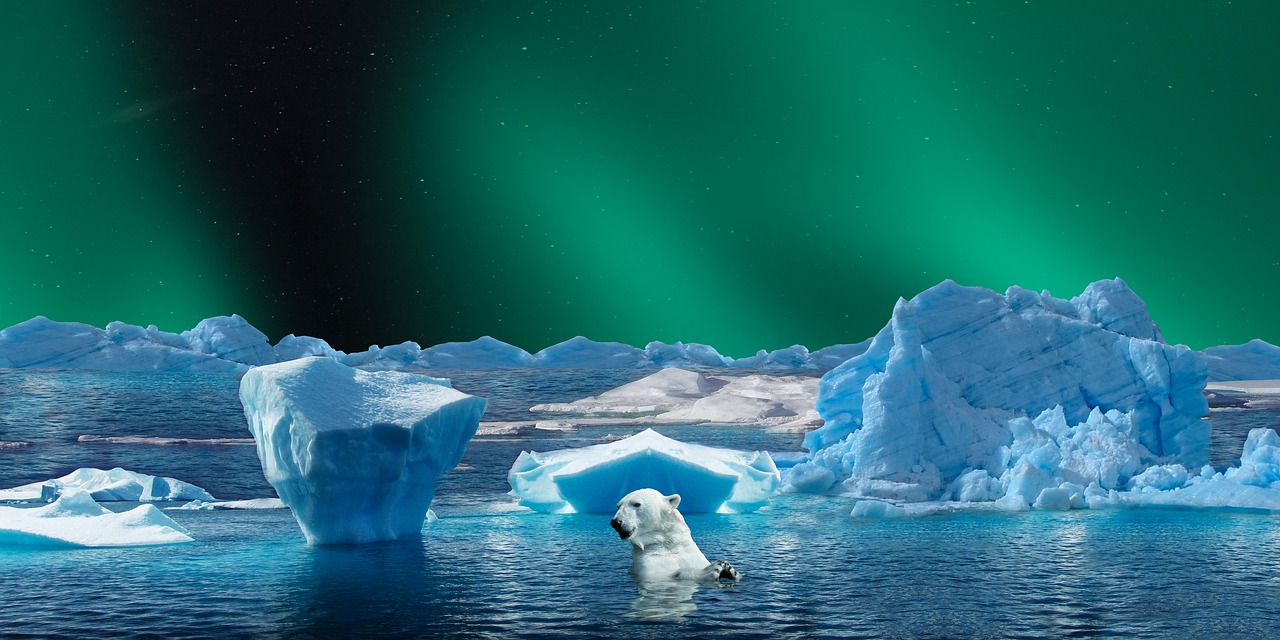
Understanding Climate Change
Climate change is one of the most pressing issues of our time, and understanding its intricacies is essential for everyone. But what exactly is climate change? In simple terms, it refers to significant changes in global temperatures and weather patterns over time. While climate change can occur naturally, the current phase we are experiencing is largely driven by human activities, particularly the burning of fossil fuels, deforestation, and industrial processes. These actions release greenhouse gases, such as carbon dioxide (CO2) and methane (CH4), into the atmosphere, creating a "blanket" effect that traps heat and leads to global warming.
The scientific consensus is clear: climate change is real, and its effects are being felt worldwide. According to the Intergovernmental Panel on Climate Change (IPCC), the last few decades have seen unprecedented warming, with average global temperatures rising by approximately 1.2 degrees Celsius since the late 19th century. This may sound small, but even slight increases in temperature can lead to significant changes in weather patterns, sea levels, and ecosystems.
To grasp the urgency of the situation, consider the following causes of climate change:
- Greenhouse Gas Emissions: The burning of coal, oil, and gas for energy is the largest single source of global greenhouse gas emissions.
- Deforestation: Trees absorb CO2, so cutting them down not only releases stored carbon but also reduces the planet's ability to absorb future emissions.
- Agricultural Practices: Certain farming techniques contribute to greenhouse gas emissions, particularly methane released from livestock and rice paddies.
The implications of climate change are profound and multifaceted. From the melting of polar ice caps to the rising sea levels threatening coastal cities, the effects are widespread. Ecosystems are being disrupted, leading to shifts in species distribution and even extinction. As temperatures rise, weather patterns become increasingly erratic, resulting in more frequent and severe storms, droughts, and wildfires. These phenomena not only affect the environment but also have far-reaching consequences for human society.
Understanding climate change is not just about recognizing the problem; it's also about acknowledging our role in it and the power we have to effect change. By educating ourselves and others, advocating for sustainable practices, and supporting policies aimed at reducing greenhouse gas emissions, we can contribute to a healthier planet for future generations. The time to act is now, and every small effort counts in the fight against climate change.
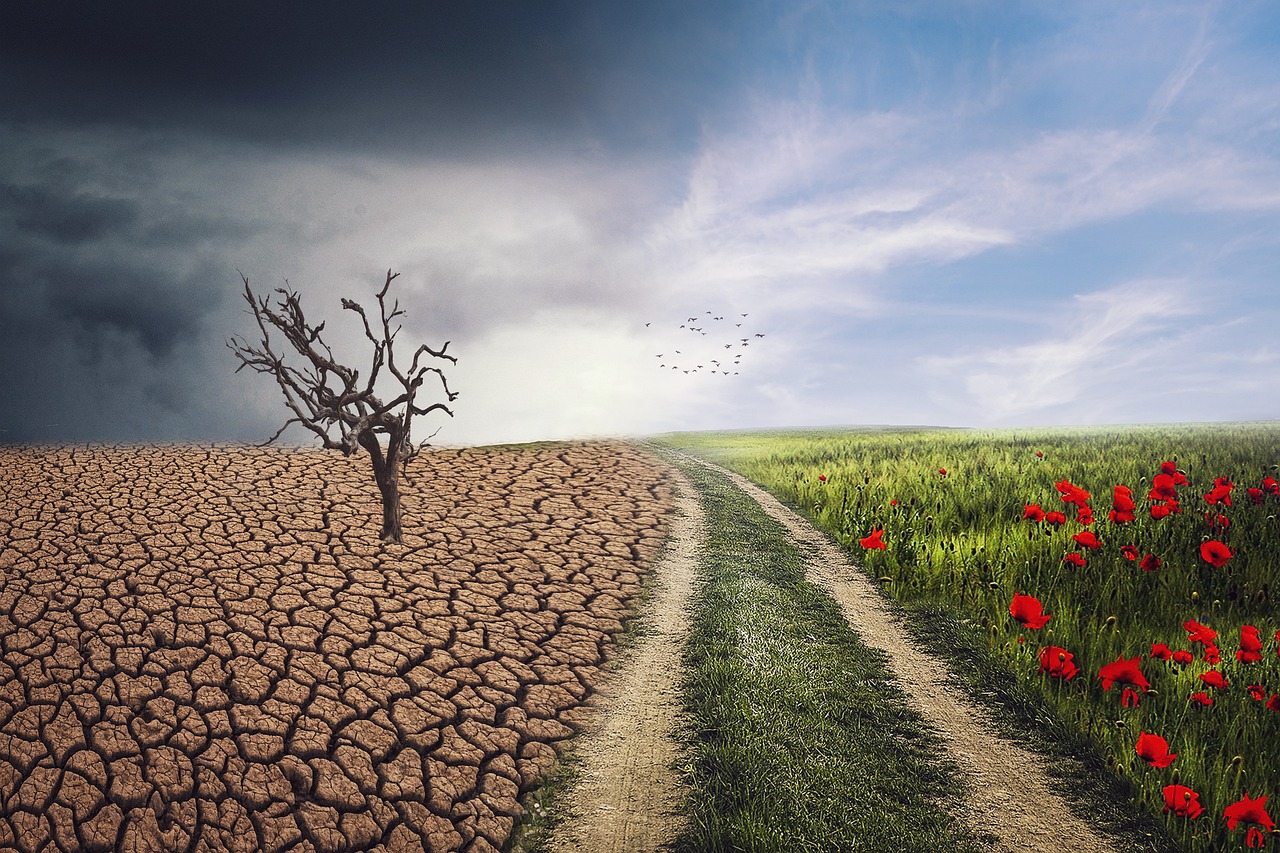
Environmental Consequences
The impacts of climate change are not just distant threats; they are unfolding right before our eyes, reshaping our planet in ways that are both profound and alarming. From the moment we wake up to the sound of a raging storm to the eerie silence of a once-bustling forest, the environmental consequences of climate change are pervasive and varied. The rising temperatures are not merely numbers on a thermometer; they signify a shift in our climate system, leading to a domino effect that alters ecosystems and disrupts natural balances.
One of the most visible manifestations of climate change is the melting of ice caps and glaciers. This isn't just a problem for polar bears; it leads to rising sea levels that threaten coastal cities and ecosystems. As the earth warms, these ice masses, which have stood for millennia, are retreating at alarming rates. For instance, the Arctic sea ice extent has declined by about 40% since the late 1970s, and this trend shows no signs of slowing down. The implications are staggering, as cities like Miami, New Orleans, and even New York face the prospect of being underwater in the not-so-distant future.
Climate change is also a key driver of extreme weather events. Have you ever noticed how storms seem to pack more punch these days? Hurricanes are becoming more intense, and droughts are stretching longer than ever before. This increase in frequency and intensity of such events wreaks havoc on communities and infrastructure. For instance, the devastating hurricanes that have struck the Gulf Coast in recent years have caused billions in damages and left countless families displaced. It's not just about the immediate destruction; the long-term recovery can take years, if not decades.
As we delve deeper into the environmental consequences, we find that climate change poses a significant threat to biodiversity. Many species are struggling to adapt to the rapid changes in their habitats, leading to increased rates of extinction. The loss of biodiversity is akin to losing a piece of the intricate puzzle that makes up our ecosystem. Each species plays a unique role, and when one disappears, it can trigger a chain reaction that affects many others. Consider the plight of coral reefs, which are suffering from bleaching due to rising sea temperatures. These vibrant ecosystems are not just beautiful; they are vital to marine life and coastal protection.
Moreover, the rise in carbon dioxide levels is not only warming our planet but also leading to ocean acidification. When CO2 is absorbed by seawater, it alters the chemistry of the ocean, making it more acidic. This change has dire consequences for marine life, particularly for organisms like shellfish and coral, which struggle to build their calcium carbonate structures in more acidic waters. The implications for global food security are significant, as many communities rely on these marine resources for their livelihoods. Imagine a world where your favorite seafood dish becomes a rarity, all because of the changes we are inflicting on our oceans.
In conclusion, the environmental consequences of climate change are extensive and multifaceted. They touch every corner of our globe, affecting not just the environment but also human life and well-being. It is imperative that we recognize these changes and take action to mitigate their effects. Time is of the essence, and the future of our planet hangs in the balance.
- What are the main causes of climate change? Climate change is primarily caused by human activities such as burning fossil fuels, deforestation, and industrial processes that increase greenhouse gas emissions.
- How does climate change affect weather patterns? Climate change leads to more extreme weather events, including intense storms, prolonged droughts, and unpredictable rainfall, disrupting natural weather patterns.
- What can individuals do to combat climate change? Individuals can reduce their carbon footprint by using public transport, conserving energy, supporting renewable energy initiatives, and advocating for sustainable practices.
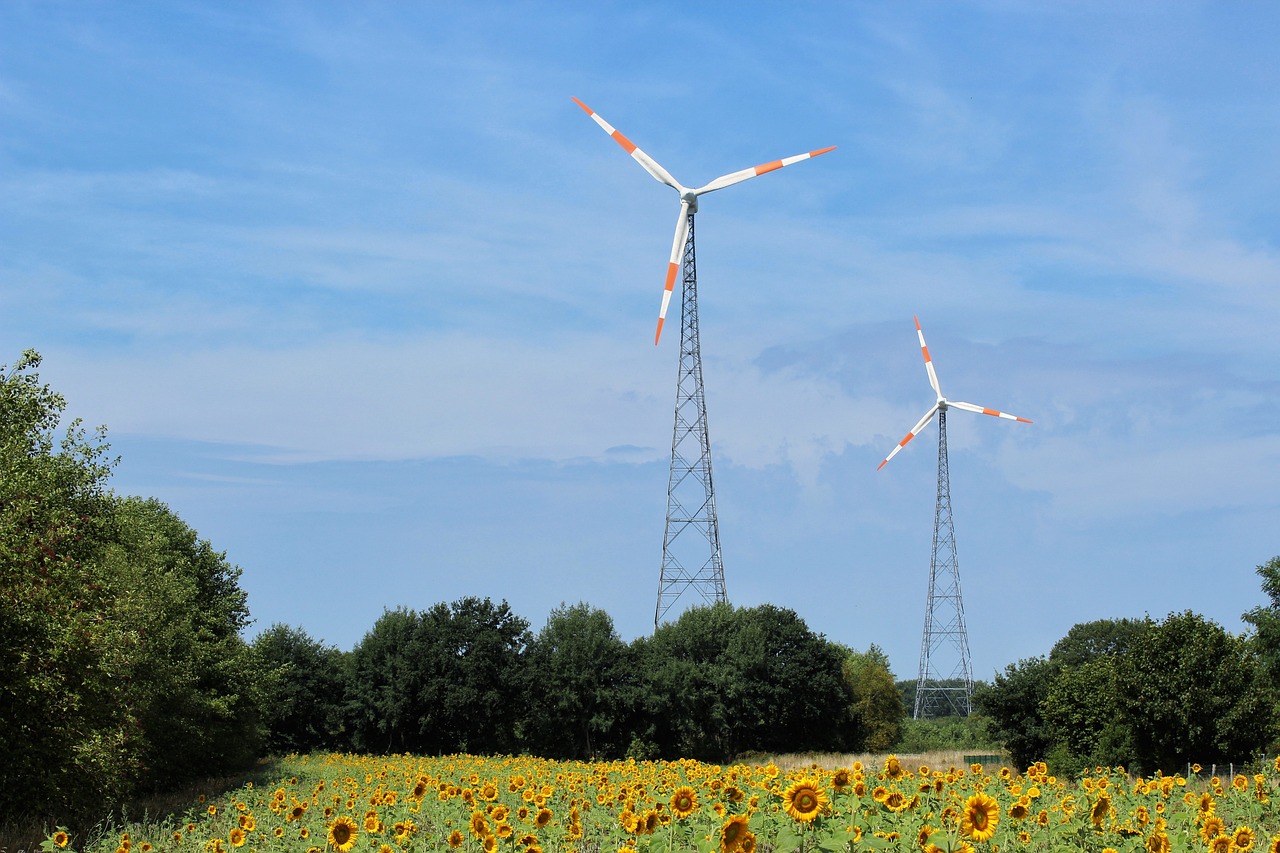
Extreme Weather Events
When you think about climate change, what comes to mind? Perhaps it’s the rising sea levels or the melting polar ice caps. But one of the most alarming and immediate consequences of climate change is the increase in . These events are not just a distant concern; they are happening right now and affecting communities around the globe. From hurricanes that seem to grow stronger by the season to droughts that leave farmers in despair, the impacts are profound and far-reaching.
Extreme weather events can be categorized into several types, each with its own devastating effects. For instance, consider the following:
- Hurricanes: These powerful storms have been intensifying, fueled by warmer ocean temperatures. The destruction they bring—homes destroyed, lives lost, and communities uprooted—is heart-wrenching.
- Droughts: As temperatures rise, many regions are experiencing prolonged periods of drought. This not only affects water supply but also jeopardizes food production, leading to higher prices and food insecurity.
- Floods: On the flip side, some areas are inundated with heavy rainfall, leading to catastrophic flooding. The aftermath is often a long road to recovery, with infrastructure damaged and communities displaced.
But why are these events becoming more frequent and severe? The answer lies in the science of climate change. As greenhouse gases trap heat in the atmosphere, the planet warms up, creating conditions that are ripe for extreme weather. The National Oceanic and Atmospheric Administration (NOAA) reports a significant increase in the number of weather-related disasters over the past few decades. In fact, the cost of these disasters is soaring, with damages reaching billions of dollars annually.
Let's take a closer look at the statistics. According to recent data from NOAA, the number of billion-dollar weather disasters has increased dramatically. Here’s a quick overview:
| Year | Number of Billion-Dollar Disasters |
|---|---|
| 2010 | 22 |
| 2015 | 29 |
| 2020 | 22 |
| 2021 | 22 |
| 2022 | 23 |
This table illustrates a worrying trend: as climate change progresses, we can expect to see even more extreme weather events, each with its own unique set of challenges. The reality is that these events do not discriminate; they affect everyone, from urban centers to rural communities. The question is, how prepared are we to face these challenges?
In conclusion, extreme weather events are a clear signal that climate change is no longer a future problem; it is a current crisis. The urgency for action has never been greater. By understanding the implications of these events, we can better prepare ourselves and advocate for solutions that address the root causes of climate change. The time to act is now, and it’s up to each of us to contribute to the solution.
Q: What causes extreme weather events?
A: Extreme weather events are primarily caused by climate change, which leads to increased temperatures, altered weather patterns, and more moisture in the atmosphere.
Q: How can we prepare for extreme weather events?
A: Communities can prepare by investing in resilient infrastructure, developing emergency response plans, and educating citizens about the risks and safety measures.
Q: Are extreme weather events becoming more common?
A: Yes, research shows that the frequency and intensity of extreme weather events are increasing due to climate change.
Q: What can individuals do to help combat climate change?
A: Individuals can reduce their carbon footprint by using public transport, conserving energy, supporting renewable energy initiatives, and advocating for policy changes.
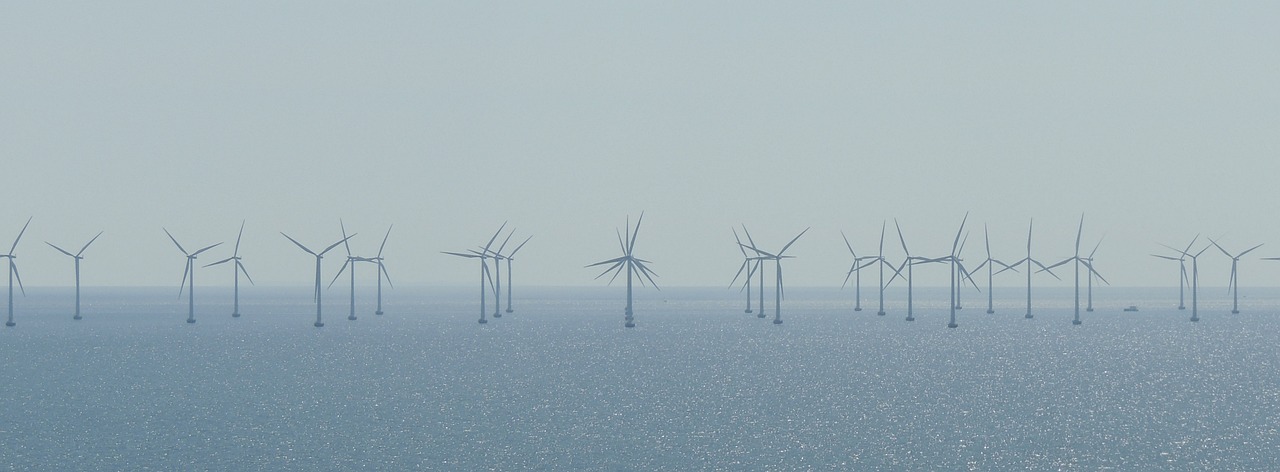
Impact on Biodiversity
The impact of climate change on biodiversity is nothing short of alarming. As global temperatures rise, many species find themselves in a race against time, struggling to adapt to rapidly changing environments. Imagine a delicate ecosystem, where every plant, animal, and microorganism plays a crucial role, suddenly thrown into disarray. This is the reality we face as climate change disrupts these intricate relationships, leading to a cascade of consequences that threaten the very fabric of life on Earth.
One of the most significant effects of climate change is habitat loss. As temperatures soar, many species are forced to migrate to cooler areas, often leading to overcrowding in these new habitats. Unfortunately, not all species can make this transition. For example, polar bears, reliant on sea ice for hunting seals, are facing severe threats as their icy homes melt away. The loss of habitat not only jeopardizes individual species but also disrupts entire ecosystems, leading to a decline in biodiversity.
Furthermore, climate change exacerbates the problem of invasive species. Warmer temperatures allow non-native species to thrive, often at the expense of native flora and fauna. This competition can lead to the extinction of local species, as they struggle to compete for resources. For instance, in many regions, invasive plants have outcompeted native plants, altering the landscape and diminishing the habitats that countless animals depend on. The ripple effects of these changes can be profound, impacting food webs and ecosystem services.
Moreover, climate change impacts reproductive patterns and life cycles of various species. As seasons shift, the timing of breeding, migration, and flowering can become misaligned. For instance, if insects emerge earlier due to warmer temperatures, birds that rely on these insects for food may find themselves in a precarious situation, struggling to feed their young. This disruption can lead to population declines, further contributing to the loss of biodiversity.
To illustrate the potential consequences of biodiversity loss, consider the following table highlighting some key species at risk:
| Species | Threats | Conservation Status |
|---|---|---|
| Polar Bear | Melting ice caps, habitat loss | Vulnerable |
| Coral Reefs | Ocean acidification, rising temperatures | Endangered |
| Amphibians (e.g., frogs) | Climate change, habitat destruction | Critically Endangered |
In summary, the impact of climate change on biodiversity is profound and multifaceted. The loss of habitats, the rise of invasive species, and the disruption of life cycles all contribute to a concerning decline in biodiversity. This decline not only threatens individual species but also jeopardizes the ecosystems that sustain us. Protecting biodiversity is not just about saving the animals and plants we love; it's about preserving the health of our planet for future generations. As stewards of the Earth, it is our responsibility to take action to mitigate climate change and protect the rich tapestry of life that surrounds us.
- What is biodiversity? Biodiversity refers to the variety of life on Earth, including the diversity of species, ecosystems, and genetic variations within species.
- How does climate change affect biodiversity? Climate change leads to habitat loss, altered life cycles, and increased competition from invasive species, all of which threaten biodiversity.
- Why is biodiversity important? Biodiversity is crucial for ecosystem stability, providing essential services such as pollination, water purification, and climate regulation.
- What can be done to protect biodiversity? Protecting biodiversity requires global cooperation, sustainable practices, and conservation efforts to mitigate climate change and preserve habitats.

Ocean Acidification
Ocean acidification is one of the less visible yet profoundly impactful consequences of climate change. As the levels of carbon dioxide (CO2) in the atmosphere rise, a significant portion of this gas is absorbed by the oceans. This absorption leads to a chemical reaction that decreases the pH of seawater, making it more acidic. To put it simply, our oceans are turning into soda—fizzy and acidic, which is not a good thing for marine life.
The implications of ocean acidification are dire. It disrupts the ability of marine organisms, particularly those with calcium carbonate shells or skeletons, such as corals, mollusks, and some plankton species, to build and maintain their structures. Imagine trying to build a sandcastle with wet sand that keeps washing away—this is essentially what these creatures are facing as their habitats become less stable.
Research indicates that the pH of ocean waters has already dropped by about 0.1 units since the beginning of the industrial revolution, and projections suggest it could decrease by another 0.3 to 0.4 units by the end of this century if CO2 emissions continue at their current pace. This change may seem small, but it translates into a significant increase in acidity. The table below illustrates the potential impacts of varying pH levels on marine life:
| pH Level | Impact on Marine Life |
|---|---|
| 8.2 (Current Average) | Healthy coral reefs; thriving marine ecosystems. |
| 7.8 | Coral bleaching begins; some shellfish struggle to survive. |
| 7.5 | Significant decline in shellfish populations; coral reefs at risk. |
| 7.0 | Severe impacts on marine biodiversity; potential ecosystem collapse. |
Moreover, ocean acidification poses a threat to global food security. Many communities around the world rely on seafood as a primary source of protein. As shellfish populations dwindle and coral reefs—the backbone of diverse marine ecosystems—begin to erode, the economic stability of fishing industries is jeopardized. The ripple effects can be catastrophic, affecting not just marine life but also the livelihoods of millions of people.
In addition to the biological consequences, the economic implications of ocean acidification cannot be overlooked. Industries that depend on healthy oceans, such as tourism and fisheries, face increased costs and reduced yields. The need for adaptive strategies and sustainable practices becomes more urgent as we confront these challenges head-on.
In conclusion, ocean acidification is a silent yet aggressive threat that underscores the interconnectedness of our planet’s systems. It serves as a stark reminder that our actions have far-reaching consequences, and the time to act is now. By reducing our carbon footprint and advocating for policies that protect our oceans, we can help mitigate this crisis and preserve marine biodiversity for future generations.
- What causes ocean acidification? Ocean acidification is primarily caused by the absorption of carbon dioxide from the atmosphere into the oceans, leading to a decrease in pH levels.
- How does ocean acidification affect marine life? It negatively impacts organisms that rely on calcium carbonate for their shells and skeletons, making it difficult for them to survive and thrive.
- What can be done to combat ocean acidification? Reducing carbon emissions, promoting sustainable fishing practices, and protecting marine ecosystems are crucial steps in addressing this issue.

Human Health Risks
Climate change isn't just an environmental issue; it has profound implications for human health. As temperatures rise and weather patterns shift, we are witnessing an alarming increase in health risks that can affect everyone, from the youngest to the oldest members of our communities. Think of climate change as a silent thief, gradually stealing away our health and well-being without us even noticing it. The consequences can be severe, and it’s essential to understand how they manifest.
One of the most immediate threats posed by climate change is the rise in heat-related illnesses. As summer temperatures soar, the risk of heat exhaustion and heat stroke increases, particularly for vulnerable populations like the elderly and those with pre-existing health conditions. Hospitals are already seeing a spike in heat-related emergencies during extreme heat events, and this trend is expected to continue. Imagine a world where the summer sun feels more like a relentless enemy than a warm friend.
Moreover, climate change exacerbates respiratory issues. Increased temperatures lead to higher levels of ozone and other pollutants in the air, making it difficult for people with asthma and other respiratory conditions to breathe. This situation can create a vicious cycle; as air quality worsens, more people develop respiratory problems, which in turn increases healthcare costs and burdens our medical systems. According to the World Health Organization, air pollution is responsible for millions of premature deaths each year, and climate change is making this problem worse.
Then there's the spread of infectious diseases. Warmer temperatures and changing precipitation patterns create ideal conditions for mosquitoes and other disease-carrying vectors to thrive. Diseases like malaria, dengue fever, and Zika virus are becoming more prevalent in regions where they were once rare. This shift is not just a distant threat; it’s a reality that communities across the globe are facing right now. The World Health Organization has warned that climate change could lead to an additional 250,000 deaths per year between 2030 and 2050 due to malnutrition, malaria, diarrhea, and heat stress alone.
In addition to these direct health risks, climate change also has indirect effects on mental health. Natural disasters, which are becoming more frequent and severe due to climate change, can lead to post-traumatic stress disorder (PTSD), anxiety, and depression. The emotional toll of losing homes, livelihoods, and loved ones can create a ripple effect that impacts entire communities. Mental health services are already stretched thin in many areas, and the added burden of climate-related stressors could overwhelm existing systems.
To summarize, the health risks associated with climate change are multifaceted and far-reaching. Addressing these risks requires a comprehensive approach that includes:
- Improving public health infrastructure to prepare for climate-related health emergencies.
- Investing in education and awareness programs to help communities understand and mitigate health risks.
- Implementing policies aimed at reducing greenhouse gas emissions to slow the pace of climate change.
As we move forward, it’s crucial that we recognize climate change not just as an environmental challenge, but as a profound public health crisis that demands immediate action. The time for complacency is over; we must act now to protect our health and the health of future generations.
Q: How does climate change impact human health?
A: Climate change affects human health through increased heat-related illnesses, respiratory issues due to poor air quality, the spread of infectious diseases, and mental health challenges stemming from natural disasters.
Q: Who is most vulnerable to the health effects of climate change?
A: Vulnerable populations include the elderly, children, individuals with pre-existing health conditions, and those living in low-income communities that may lack access to healthcare.
Q: What can individuals do to mitigate health risks associated with climate change?
A: Individuals can contribute by reducing their carbon footprint, advocating for sustainable practices, staying informed about local health risks, and supporting policies aimed at addressing climate change.
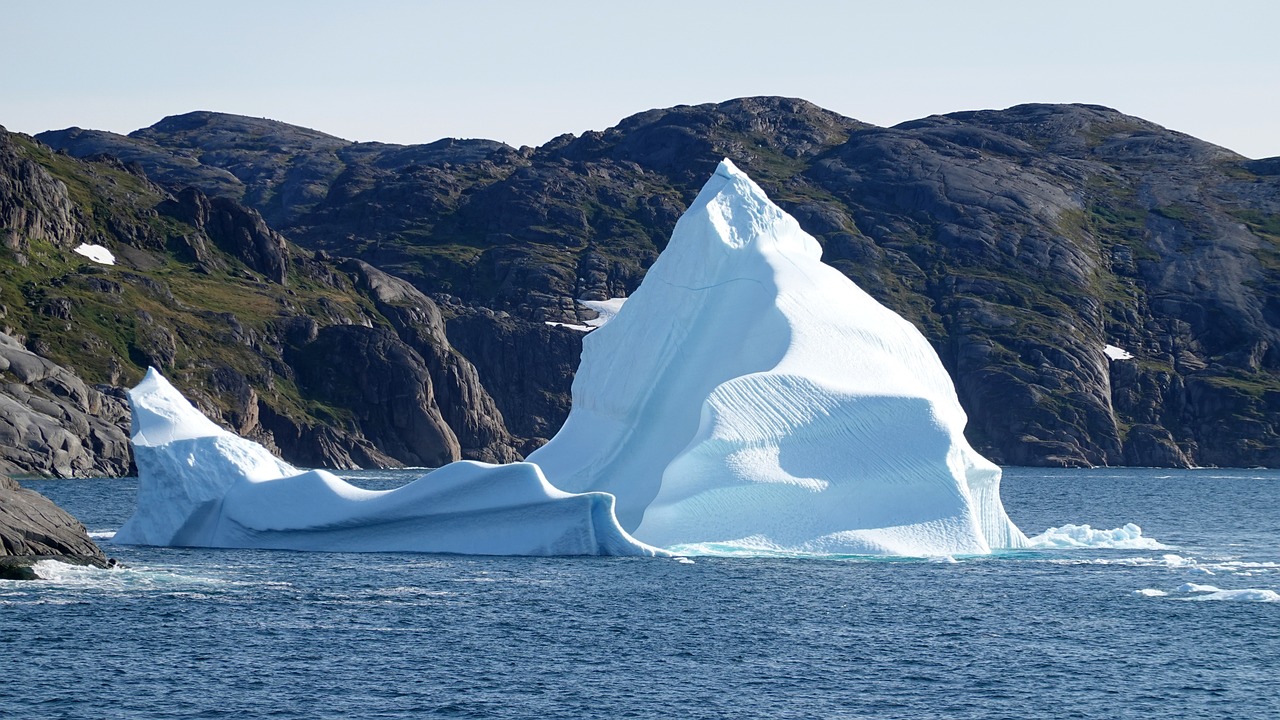
Economic Implications
Climate change is not just an environmental issue; it's a massive economic challenge that threatens the very foundation of our global economy. As temperatures rise and weather patterns shift, the costs associated with natural disasters are skyrocketing. Just think about it: when a hurricane sweeps through a coastal town, it doesn’t just bring destruction; it also brings a hefty price tag for recovery and rebuilding. The financial burden of these disasters falls on governments, insurance companies, and ultimately, taxpayers. According to recent studies, the global economic losses from climate-related disasters could exceed $300 billion annually by 2030 if we don't take action now.
Moreover, the agricultural sector is feeling the heat—literally. Farmers are facing unpredictable weather patterns that disrupt planting and harvesting cycles, leading to reduced crop yields. This not only threatens food security but also affects the livelihoods of millions of farmers worldwide. For instance, a drought can wipe out an entire season's crop, leaving farmers with empty pockets and food prices soaring. In fact, the World Bank estimates that climate change could push an additional 100 million people into extreme poverty by 2030 due to its impact on agriculture and livelihoods.
In addition to agriculture, the insurance industry is grappling with the rising costs of claims related to climate disasters. As the frequency and intensity of these events increase, insurance companies are forced to raise premiums, making it more expensive for homeowners and businesses to insure their properties. This creates a vicious cycle where higher costs lead to reduced coverage, leaving many vulnerable to financial ruin in the face of disaster. A recent report highlighted that insurers could face losses of $1 trillion by 2040 if climate change continues unchecked.
But it’s not just direct costs we need to consider. The ripple effects of climate change can disrupt entire industries. For instance, tourism, which relies heavily on stable weather patterns and natural beauty, is already feeling the impact. Destinations that once thrived are now facing declining visitor numbers due to extreme weather events, rising sea levels, and deteriorating ecosystems. A study projected that climate change could reduce global tourism revenue by up to 20% by 2050, affecting economies that depend on this sector.
To combat these economic implications, we need to invest in sustainable practices and innovative solutions. Transitioning to renewable energy sources like solar and wind power not only mitigates climate change but also creates jobs and stimulates economic growth. By embracing green technologies, we can pave the way for a more resilient economy that is better equipped to handle the challenges posed by climate change.
In summary, the economic implications of climate change are vast and multifaceted. From rising costs associated with natural disasters to the threat to agricultural productivity and the insurance industry, the stakes are incredibly high. If we don’t act now, we risk not just the health of our planet but the stability of our economies as well.
- What is the economic cost of climate change?
The economic cost of climate change is projected to exceed $300 billion annually by 2030, affecting various sectors including agriculture, insurance, and tourism. - How does climate change impact agriculture?
Climate change leads to unpredictable weather patterns, which disrupt planting and harvesting cycles, resulting in reduced crop yields and increased food prices. - What can be done to mitigate these economic impacts?
Investing in renewable energy sources and sustainable practices can help mitigate the effects of climate change while stimulating economic growth.

Impact on Agriculture
The impact of climate change on agriculture is profound and multifaceted, affecting everything from crop yields to food security. As temperatures rise and weather patterns become increasingly unpredictable, farmers are facing challenges that threaten their livelihoods and the global food supply. Imagine a farmer waking up to find that the seasons have shifted, with spring arriving weeks earlier than expected. This disruption can lead to mismatched planting schedules and reduced crop yields, creating a ripple effect that can be felt across the entire food chain.
One of the most significant challenges posed by climate change is the increase in extreme weather events. Droughts, floods, and storms can devastate crops, leading to significant losses for farmers. For instance, a severe drought can dry up water sources, making it nearly impossible for crops to survive. Conversely, heavy rainfall can lead to flooding, washing away seeds and eroding soil. According to a recent study, the frequency of extreme weather events has increased by over 30% in the last few decades, putting immense pressure on agricultural systems worldwide.
Moreover, climate change affects not only the quantity of food produced but also its quality. Higher temperatures can lead to reduced nutritional value in crops. For example, studies have shown that elevated carbon dioxide levels can decrease the protein content in wheat and rice, essential staples for billions of people. This decline in nutritional quality raises serious concerns about food security, particularly in developing countries where populations are already vulnerable to malnutrition.
To combat these challenges, farmers are increasingly adopting sustainable practices and innovative technologies. Techniques such as crop rotation, agroforestry, and precision farming are being implemented to enhance resilience against climate impacts. Additionally, the use of drought-resistant crop varieties is becoming more common, allowing farmers to adapt to changing conditions. However, these solutions require investment and support, which can be a barrier for many smallholder farmers.
In conclusion, the impact of climate change on agriculture is a pressing issue that demands urgent attention. The consequences extend beyond individual farmers; they affect global food security and economic stability. As we look to the future, it is essential to prioritize sustainable agricultural practices and support innovations that can help mitigate the adverse effects of climate change. By doing so, we can ensure that future generations have access to the food they need, even in a changing climate.
- How does climate change affect crop yields? Climate change can lead to unpredictable weather patterns, which disrupt planting and harvesting schedules, ultimately reducing crop yields.
- What are some sustainable practices farmers can adopt? Farmers can use crop rotation, agroforestry, and precision farming to improve resilience against climate impacts.
- Why is food security a concern with climate change? Climate change affects both the quantity and quality of food produced, leading to potential malnutrition, especially in vulnerable populations.
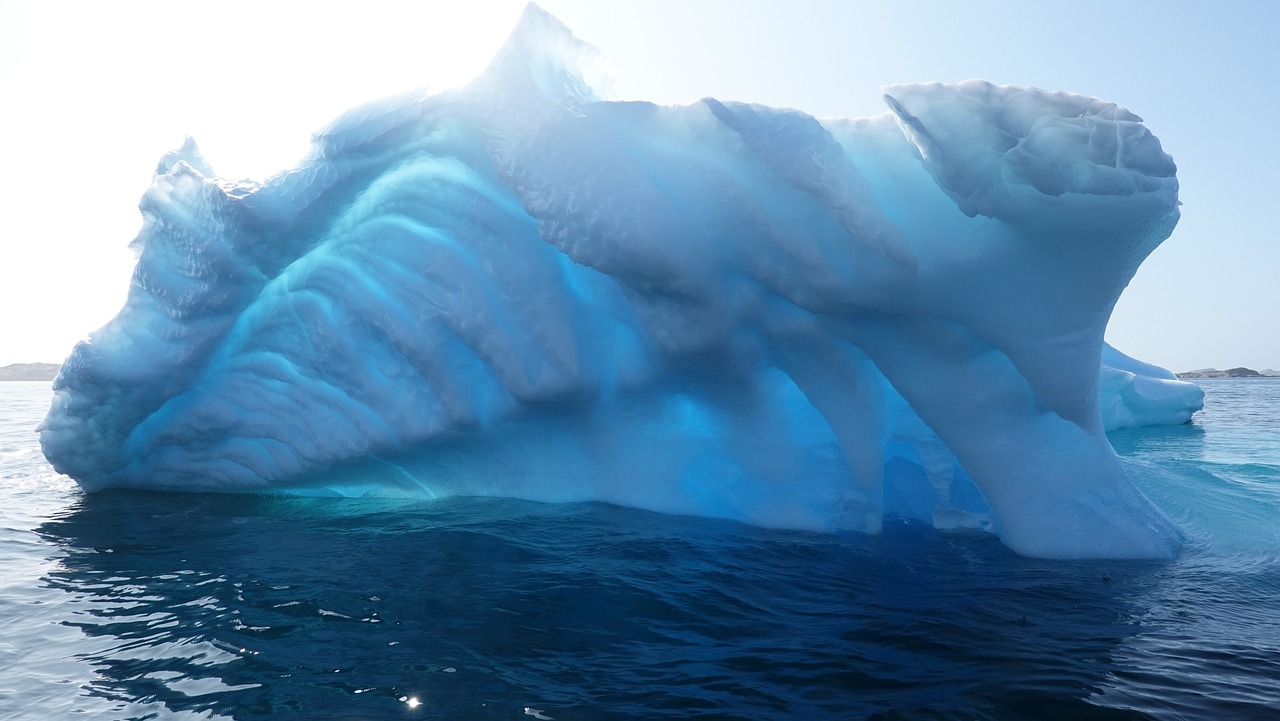
Insurance and Infrastructure Costs
As the impacts of climate change become increasingly evident, one of the most pressing concerns is the escalating costs associated with insurance and infrastructure. These costs are not just numbers on a balance sheet; they represent the very foundation of our communities and the safety of our homes. With the frequency and severity of natural disasters on the rise, insurance companies are facing unprecedented challenges. The financial burden of claims from events such as hurricanes, floods, and wildfires is pushing premiums higher, making it more difficult for individuals and businesses to afford coverage.
Consider this: when a hurricane strikes, the damages can run into the billions. Insurance companies must evaluate these risks and adjust their rates accordingly. This leads to a vicious cycle where rising premiums can leave many underinsured or completely without coverage. The impact on low-income households is particularly severe, as they may not have the financial means to pay for increased premiums or to rebuild after a disaster.
Moreover, infrastructure costs are soaring as cities and towns scramble to adapt to a changing climate. Roads, bridges, and public transportation systems that were once considered robust are now vulnerable to extreme weather events. The need for resilient infrastructure has never been more urgent. Local governments are investing in upgrades and repairs, but these efforts require significant funding. For example, a recent study indicated that the U.S. could face up to $1 trillion in infrastructure costs by 2050 due to climate change impacts.
| Type of Cost | Estimated Cost (in billions) |
|---|---|
| Insurance Claims | $50 |
| Infrastructure Upgrades | $100 |
| Total Estimated Costs | $150 |
It's essential to recognize that these costs are not solely borne by insurance companies or governments; they trickle down to the average citizen. When infrastructure fails, it can lead to disruptions in daily life, affecting everything from commutes to emergency services. The economic ripple effects can be felt across various sectors, further exacerbating the financial strain on communities.
To combat these rising costs, many experts advocate for a proactive approach. Investing in sustainable infrastructure and enhancing building codes can mitigate future risks. For instance, creating green spaces can help absorb excess rainwater, reducing the likelihood of flooding. Additionally, embracing innovative technologies such as smart grids and resilient transportation systems can lead to long-term savings and increased safety.
In conclusion, the costs associated with insurance and infrastructure in the face of climate change are not just financial figures; they represent the resilience of our communities. By understanding these challenges and investing in sustainable solutions, we can work towards a future where both our lives and our environments are safeguarded against the unpredictable forces of nature.
- What factors are driving up insurance costs due to climate change?
Insurance costs are rising primarily due to the increasing frequency and severity of natural disasters, which lead to higher claims and financial losses for insurance companies. - How can communities prepare for rising infrastructure costs?
Communities can prepare by investing in resilient infrastructure, updating building codes, and promoting sustainable practices that reduce vulnerability to climate impacts. - Are there government programs to help with insurance costs?
Yes, many governments offer programs and subsidies to assist low-income households with insurance premiums and disaster recovery efforts.
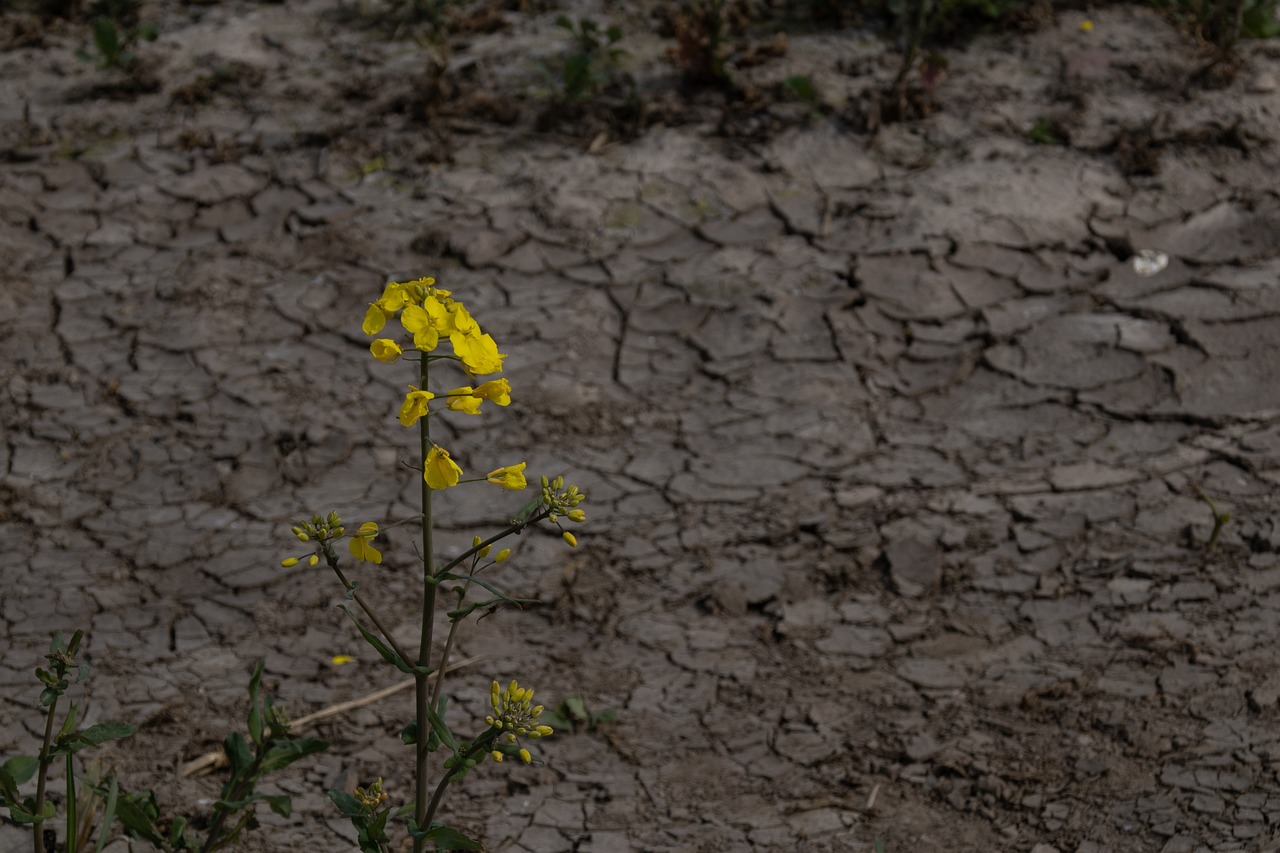
Global Responses and Solutions
As the impacts of climate change become increasingly evident, the world is waking up to the urgent need for collective action. Global responses to climate change are not just about policies or treaties; they represent a unified effort to safeguard our planet for future generations. Countries, organizations, and individuals are coming together to create innovative solutions aimed at reducing greenhouse gas emissions and promoting sustainability. But what does this look like on the ground?
At the heart of the global response is the Paris Agreement, a landmark accord that aims to limit global warming to well below 2 degrees Celsius. This agreement has prompted nations to set ambitious targets for reducing emissions. For instance, countries are transitioning to cleaner energy sources, enhancing energy efficiency, and investing in sustainable practices. The commitment to these goals is not merely a political statement; it’s a call to action that resonates across borders.
One of the most promising avenues for combating climate change is the shift towards renewable energy. Solar, wind, and hydroelectric power are not just buzzwords; they are essential components of a sustainable future. By harnessing these energy sources, we can significantly reduce our reliance on fossil fuels, which are the primary culprits behind greenhouse gas emissions. In fact, according to a recent report, the global renewable energy market is projected to grow at a rate of over 8% annually through 2027.
| Renewable Energy Source | Benefits | Challenges |
|---|---|---|
| Solar Power | Abundant and sustainable | High initial costs |
| Wind Power | Low operational costs | Intermittent energy supply |
| Hydroelectric Power | Reliable and efficient | Environmental impact on aquatic ecosystems |
However, transitioning to renewable energy is just one piece of the puzzle. Community engagement plays a crucial role in this fight. Local communities are often the first to feel the effects of climate change, and their involvement is essential in crafting effective solutions. Grassroots movements are emerging worldwide, advocating for sustainable practices and educating the public about climate issues. When communities unite, they can create a ripple effect that leads to significant changes.
Moreover, the role of technology cannot be overlooked. Innovations such as carbon capture and storage (CCS) and electric vehicles (EVs) are paving the way for a cleaner future. These technologies not only help reduce emissions but also create new job opportunities in emerging industries. The transition to a low-carbon economy is not just an environmental imperative; it is also an economic opportunity that can drive growth and innovation.
It's important to remember that while global efforts are vital, individual actions also matter. Simple steps like reducing energy consumption, supporting local businesses, and advocating for policy changes can collectively make a significant impact. Each of us has the power to contribute to a more sustainable future, and when we take action together, we can create a formidable force against climate change.
In conclusion, the global response to climate change is multifaceted, involving international agreements, technological innovations, and grassroots movements. It’s a race against time, but with concerted efforts and a commitment to sustainability, we can turn the tide. The future of our planet depends on the actions we take today.
- What is the Paris Agreement? The Paris Agreement is an international treaty aimed at combating climate change by limiting global warming to below 2 degrees Celsius.
- How can individuals contribute to fighting climate change? Individuals can reduce energy consumption, support sustainable practices, and advocate for policy changes in their communities.
- What are some examples of renewable energy sources? Examples include solar, wind, and hydroelectric power, all of which help reduce reliance on fossil fuels.
- Why is community engagement important? Community engagement is crucial because local populations are often the first affected by climate change, and their involvement can lead to effective, localized solutions.

Renewable Energy Initiatives
As we stand on the precipice of a climate crisis, the shift towards renewable energy has never been more crucial. Renewable energy sources, such as solar, wind, and hydroelectric power, offer a sustainable alternative to fossil fuels, which have long been the primary drivers of greenhouse gas emissions. By embracing these clean energy solutions, we can significantly reduce our carbon footprint and mitigate the impacts of climate change. But what exactly does this shift entail, and how can it transform our future?
One of the most exciting aspects of renewable energy initiatives is their potential to create jobs and stimulate economic growth. According to recent studies, the renewable energy sector is one of the fastest-growing industries globally. For instance, in 2020 alone, the solar and wind industries created over 200,000 jobs in the United States. This trend is not just limited to the U.S.; countries worldwide are investing heavily in renewable technologies, leading to a global job market that is rapidly evolving.
Moreover, the transition to renewable energy isn't just about job creation; it also involves significant advancements in technology. Innovations in battery storage and energy efficiency are making it easier than ever to harness and utilize renewable resources. For example, solar panels have become more efficient, and the costs associated with installation have plummeted, making them accessible to homeowners and businesses alike. This democratization of energy is empowering individuals to take control of their energy consumption and contribute to a more sustainable future.
However, transitioning to renewable energy is not without its challenges. One major hurdle is the need for infrastructure development. To fully harness the power of renewable resources, we must invest in modernizing our energy grids and storage systems. This requires collaboration between governments, private sectors, and communities. For instance, countries like Germany have implemented extensive policies to support the integration of renewable energy into their national grids, showcasing a successful model for others to follow.
In addition to infrastructure, education plays a vital role in the success of renewable energy initiatives. Public awareness campaigns can help demystify renewable technologies and encourage adoption. When people understand the benefits—both environmental and economic—they are more likely to support policies that promote clean energy solutions. Local governments can also foster community engagement by hosting workshops and informational sessions that highlight the importance of renewable energy.
To illustrate the impact of renewable energy initiatives, consider the following table, which highlights the growth of different renewable energy sources over the past decade:
| Year | Solar Energy (GW) | Wind Energy (GW) | Hydropower (GW) |
|---|---|---|---|
| 2010 | 40 | 198 | 1,000 |
| 2015 | 227 | 432 | 1,080 |
| 2020 | 710 | 743 | 1,200 |
This table clearly shows the exponential growth of solar and wind energy, which are becoming increasingly vital components of our energy landscape. As these technologies continue to evolve, they will play a pivotal role in achieving global climate goals.
In conclusion, renewable energy initiatives are not just a trend; they represent a fundamental shift towards a sustainable future. By investing in clean energy, we are not only addressing the urgent challenges posed by climate change but also paving the way for economic growth, job creation, and technological innovation. The time to act is now—let's harness the power of the sun, wind, and water to create a cleaner, greener planet for generations to come.
- What are renewable energy sources? Renewable energy sources include solar, wind, hydroelectric, geothermal, and biomass energy.
- How does renewable energy help combat climate change? Renewable energy reduces our reliance on fossil fuels, which are the primary source of greenhouse gas emissions.
- Can renewable energy power my home? Yes, many homeowners are now installing solar panels and wind turbines to generate their own electricity.
- What are the economic benefits of renewable energy? The renewable energy sector creates jobs, stimulates local economies, and can lead to lower energy costs over time.

Community Engagement and Action
When it comes to tackling climate change, one might think that the responsibility lies solely with governments and big corporations. However, the truth is that local communities are at the heart of the solution. Community engagement is not just a buzzword; it is a powerful tool that can lead to significant change. By coming together, individuals can create a ripple effect that transforms local practices and attitudes towards sustainability.
Imagine a neighborhood where everyone participates in a community garden. Not only does this initiative provide fresh produce, but it also fosters a sense of belonging and shared responsibility. This is just one example of how grassroots movements can make a difference. Communities can engage in various activities, such as:
- Organizing clean-up drives: These events can significantly reduce litter and promote environmental awareness.
- Implementing recycling programs: Educating residents about recycling can lead to a substantial decrease in waste.
- Hosting workshops: Teaching sustainable practices like composting or energy conservation can empower individuals to make informed choices.
Furthermore, community engagement goes beyond just local actions; it can also influence larger policies. When communities unite and voice their concerns, they can sway local governments to adopt more environmentally friendly policies. This collective action can lead to the establishment of green spaces, improved public transportation systems, and more robust climate action plans.
Another essential aspect of community engagement is education. By raising awareness about climate change and its impacts, communities can foster a culture of sustainability. Schools, local organizations, and community leaders can collaborate to provide resources and training, ensuring that everyone understands their role in combating climate change. This educational push can inspire the next generation to be more environmentally conscious and proactive.
In addition, social media plays a crucial role in community engagement. Platforms like Facebook, Instagram, and Twitter allow communities to share their initiatives, successes, and challenges with a broader audience. This digital outreach can attract new members, generate support, and even influence other communities to adopt similar practices. The power of social media can amplify local voices and create a network of engaged citizens dedicated to fighting climate change.
Ultimately, community engagement is about empowerment. When individuals feel that their actions matter, they are more likely to participate in sustainable practices. By creating a culture of collaboration and shared responsibility, communities can become bastions of resilience in the face of climate change. The journey towards sustainability is not a solo endeavor; it is a collective mission that requires the involvement of everyone. So, let’s roll up our sleeves and get to work!
| Question | Answer |
|---|---|
| How can I get involved in my community's climate action efforts? | Start by attending local meetings or events focused on sustainability. Volunteer for community projects, or initiate your own based on local needs. |
| What are some effective ways to educate others about climate change? | Organize workshops, distribute educational materials, or use social media platforms to share informative content and engage discussions. |
| Can small actions really make a difference? | Absolutely! Small actions, when multiplied by many individuals, can lead to significant changes in community behavior and policy. |
Frequently Asked Questions
- What is climate change?
Climate change refers to significant and lasting changes in the Earth's climate, particularly an increase in temperature due to human activities, such as burning fossil fuels. It's like a slow, creeping tide that gradually alters our planet's weather patterns and ecosystems.
- What are the main causes of climate change?
The primary causes of climate change include greenhouse gas emissions from industries, deforestation, and agricultural practices. Think of it as a big blanket wrapped around the Earth, trapping heat and causing temperatures to rise.
- How does climate change affect the environment?
Climate change leads to several environmental issues, such as rising sea levels, melting ice caps, and disrupted ecosystems. It’s like a domino effect; when one thing changes, it impacts everything else in the environment.
- What are extreme weather events?
Extreme weather events are severe and unusual weather conditions, including hurricanes, droughts, and floods. With climate change, these events are becoming more frequent and intense, causing havoc in communities worldwide.
- How does climate change impact human health?
Climate change poses significant health risks, such as heat-related illnesses, respiratory problems from poor air quality, and the spread of infectious diseases. It’s like a hidden enemy that can worsen our health without us even realizing it.
- What economic impacts does climate change have?
Climate change can lead to costly natural disasters, affect agricultural productivity, and increase infrastructure vulnerability. This results in a financial burden that can strain economies and affect livelihoods.
- What can be done to combat climate change?
Combating climate change requires a collective effort, including transitioning to renewable energy sources, implementing sustainable practices, and engaging local communities in climate action. Every small step counts, like drops of water filling a bucket.
- How can individuals contribute to climate solutions?
Individuals can make a difference by adopting eco-friendly habits, such as reducing waste, conserving energy, and supporting sustainable businesses. It’s about being part of a larger movement towards a healthier planet.



















